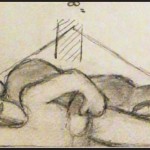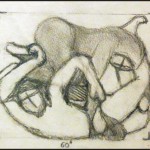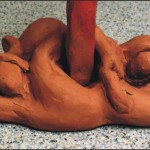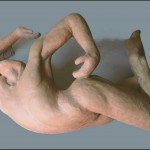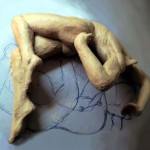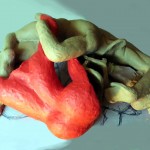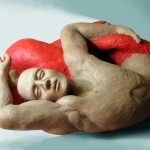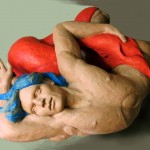The human body is a wonder to observe. Every fold, bend, curve of muscle reminds us of the miracle of life. Even more interesting and miraculous is the complex nature of human emotion and thought. The slightly raised eyebrow or tilt of the head, subtle changes in gestures are designed to emote feelings.
Michelangelo’s genius was not just found in his unparalleled skills in marble carving, but much more significantly, in his mastery of sculpting the true human fluid form out of unforgiving cold stone.
His Pieta in St Peter’s Basilica, for example, is a timeless masterpiece – not because it stands as a unique example of the Sorrowful Virgin Mother; it was not unique. In fact the ‘Pieta’ or artistic rendering of the crucified Christ and Mary, had been painted and carved for centuries. What makes Michelangelo stand out was his dedication to realism. Realism not seen for over a thousand years, since Roman or Classical times.
And this is my goal; to capture the emotion of the Sorrowful Mary with as much realism that I can muster. Using the example of the Renaissance Master, first to quickly sketch the general shape to ensure that it floats within my marble block, then second, to perfect my larger maquette.
The initial sketches should be done as quick as possible… Focus on the idea in your mind and then just move the pencil…. Remember that Michelangelo burned most of his rough sketches, and never intended anyone to see them… they are fast and disposable. The point is to capture the emotion that you are feeling, not to ensure that you ‘colour within the lines’… Go through as many sheets of paper as needed, or pick up some modelling clay or children’s plasticine and just start to pinch and pull until the shape comes to resemble what is in your minds eye. You may laugh at yourself, it may be ugly, but it is the general shape that you are after… feel free to throw the sketch away later…
The quick sketches are important, as the following step is very time consuming. The actual maquette can take weeks to complete… and you do not want to waste a month or more of your time… by following the general proportions of your rough models, you will ensure that you don’t spend countless hours refining your maquette only to find that the torso or limbs extend beyond the marble’s dimensions…
Feel free to move between and around the different focal points (Jesus and Mary) The statue should grow as a whole; this allows you to make adjustment as needed to ensure that bodies fit within each other. The goal is to have one homogeneous expression, not two separate statues forced into each other.
Save the details for the last; faces and hands. And remember that this is only a maquette, not the final sculpture, so 90 percent is good enough. Believe it or not, the difference between 90 and 100 percent is double the time.
Perfection is important, but not at this stage…. What you are trying to capture is the emotion, the story you want to express… for now, details are less important.
This polymer statue is only halfway complete. And with so much time invested, I will want to ensure that I save my work. The final marble statue will take significant time to finish and be one-of-a-kind… This smaller modelling maquette affords a unique opportunity. Not only will it stand as the template for the stone, but it can also be duplicated in terracotta or slip clay. There may be only one final marble monument, however, many smaller statues can be produced to help finance the larger project.
With this in mind, the next step is to prepare your plaster mold casting


